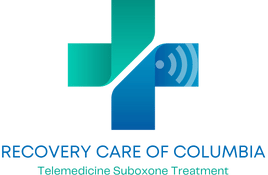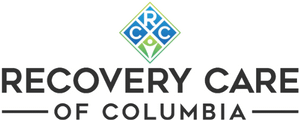Columbia Suboxone Clinic Blog
What is Precipitated Withdrawal?

Precipitated withdrawal is a sudden and severe onset of opioid withdrawal symptoms that can occur when someone takes a medication that blocks the effects of opioids, such as buprenorphine or naloxone, before they have completely detoxed from opioids.
The key word here is “before”. When someone transitions to Suboxone (buprenorphine and naloxone) after recent moderate to heavy opioid use, there is time period necessary to allow the opioid drugs to leave their system, before their intake of Suboxone.
Buprenorphine and naloxone are both used to treat opioid addiction. Buprenorphine is a partial opioid agonist, which means that it binds to opioid receptors in the brain, but it does not activate them as strongly as full opioid agonists, such as heroin or fentanyl. Naloxone is an opioid antagonist, which means that it blocks the effects of opioids.
When someone takes buprenorphine or naloxone while they are still in the early stages of opioid withdrawal, the buprenorphine or naloxone can displace the opioids that are still in their system from the opioid receptors. This can cause the sudden onset of withdrawal symptoms, which can be very uncomfortable and even dangerous.
Symptoms of Precipitated Withdrawal
The symptoms of precipitated withdrawal can vary from person to person, but they often include:
- Nausea and vomiting
- Diarrhea
- Sweating
- Chills
- Muscle aches
- Severe anxiety
- Insomnia
- Severe cravings for opioids
In some cases, precipitated withdrawal can be so severe that it requires hospitalization.
How to Avoid Precipitated Withdrawal
The best way to avoid precipitated withdrawal is to make sure that you have completely detoxed from opioids before you start taking buprenorphine or naloxone. This can be done by gradually tapering off of your opioid use or by going through a medically supervised detox program.
Complete opioid detoxification can take from as little as a few hours to 24 hours or more depending on the strength and half life of the opioids last taken. Some extended release medications such as OxyContin have a much longer half life than the shorter-acting drugs like oxycodone.
Factors that Influence How Long Opioids Stay In Your System
- How much was taken
- Weight
- Speed of metabolism
- The dose taken regularly
- The method of administration
- Presence of other drugs in the body
- Age
- Ethnicity
- Medical conditions affecting drug elimination
- Gender
Opioid Effect Timespan
Though somewhat difficult to estimate the time every opioid stays in your system, there are general guidelines that can be used as an estimate.
Long-Acting Opioids
- OxyContin
- Methadone
- Butrans
Short-Acting Opioids
- Codeine
- Morphine
- Hydrocodone
Rapid-Onset
- Intranasal Fentanyl
- Sublingual Fentanyl
Detectable Timeframe
Codeine: Urine: 1-2 days. Blood: 1 day. Saliva: 1-4 days.
Hydrocodone: Urine: 2-4 days. Blood: 1 day. Saliva: 12-36 hours.
Heroin : Urine 2-7 days. Blood: 6 hours. Saliva: 5 hours.
Morphine: Urine: 2-3 days. Blood: 12 hours. Saliva: 4 days.
Induction
Induction is the first phase of opioid addiction treatment, and refers to the transition of switching from opioid drug use to Suboxone.
If you are not sure if you are ready to start taking buprenorphine or naloxone, talk to your Suboxone doctor. They can help you determine if you are ready to start treatment and can provide you with support and guidance during the induction period.
Treatment for Precipitated Withdrawal
There is no specific treatment for precipitated withdrawal. However, there are a number of things that can be done to relieve the symptoms and make the experience more bearable. These include:
- Medications. There are a number of medications that can be used to treat the symptoms of precipitated withdrawal, such as nausea medication, diarrhea medication, and anxiety medication.
- Support. Having the support of family and friends can be very helpful during a period of precipitated withdrawal. Talking to someone about what you are going through can help you to feel less alone and can make the experience more bearable.
- Rest. Getting plenty of rest is important for recovery from precipitated withdrawal. This will help your body to heal and to start to feel better.
Ultimately, time is the best solution for precipitated withdrawal. Only by allowing the opioids in someone’s system can Suboxone be taken safely without the possibility of precipitated withdrawal.
Preventing Relapse
Precipitated withdrawal can be a very discouraging experience, but it is important to remember that it is not a sign of failure. It is simply a sign that your body is not yet ready to start taking buprenorphine or naloxone. With the right support and treatment, you can recover from precipitated withdrawal and get on the path to long-term sobriety.
Most Suboxone users will tell you they feel normal after the transition, and are able to better cope with their cravings and desired drug use. Suboxone may also provide a feeling of wellbeing to users, as it attaches to the opioid receptors in the brain that can cause a feeling of euphoria.
Start Online Suboxone Treatment Today – With or Without Your TennCare Insurance
If you are struggling with opioid addiction, there is help available. There are a number of treatment options available, including online Suboxone clinics like Recovery Care Suboxone Clinics of Tennessee who offer online medication-assisted treatment and private counseling. You can even have your medications shipped to your door.
With the right help, you can overcome your addiction and live a normal, sober life.
Sign-up for online Suboxone treatment below:



